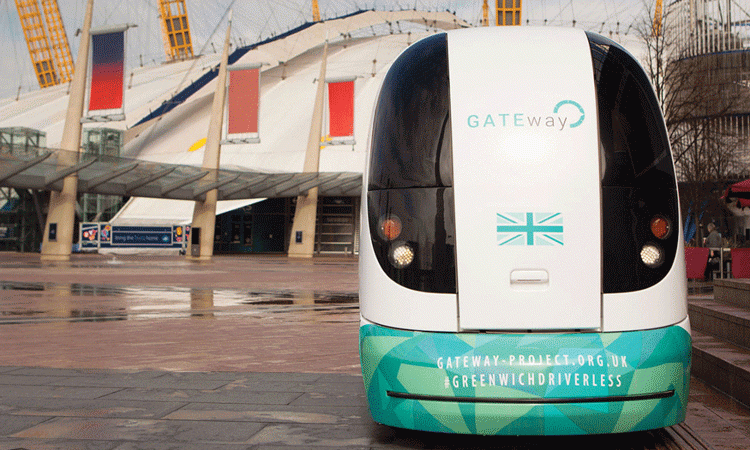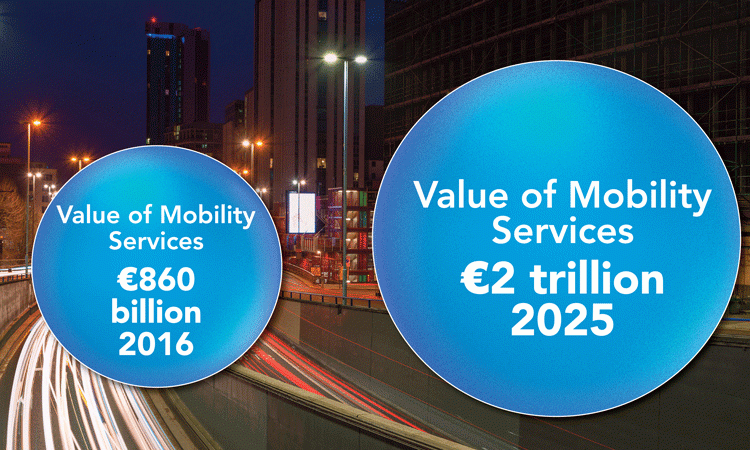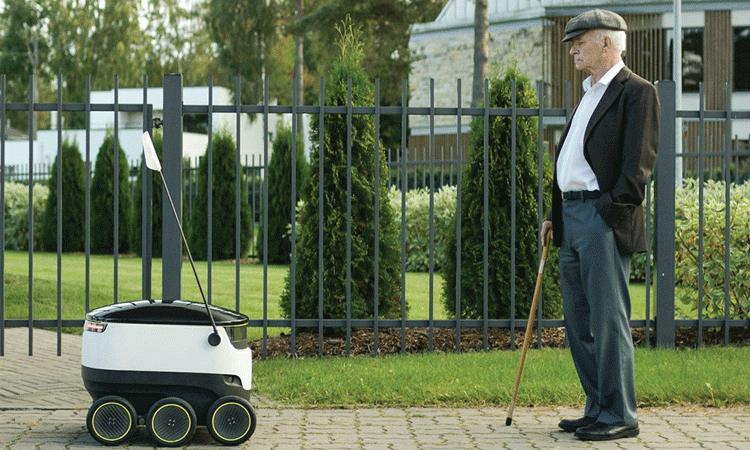Evolving to smart mobility and MaaS in the Digital Greenwich testbed
- Like
- Digg
- Del
- Tumblr
- VKontakte
- Buffer
- Love This
- Odnoklassniki
- Meneame
- Blogger
- Amazon
- Yahoo Mail
- Gmail
- AOL
- Newsvine
- HackerNews
- Evernote
- MySpace
- Mail.ru
- Viadeo
- Line
- Comments
- Yummly
- SMS
- Viber
- Telegram
- Subscribe
- Skype
- Facebook Messenger
- Kakao
- LiveJournal
- Yammer
- Edgar
- Fintel
- Mix
- Instapaper
- Copy Link
Posted: 27 April 2017 | Paul Copping (Digital Greenwich) | No comments yet
The Royal Borough of Greenwich in London, UK, launched its ‘Smart City’ strategy in October 2015, which sets out the council’s plans to embrace smart city concepts. Underpinned by the use of technology and the ability to collect, transmit, manage and interpret data, the strategy aims to enable both service providers and users to make better decisions. Paul Copping, Chief Innovation Officer of Digital Greenwich, shares how the scheme is pioneering the trial of autonomous vehicles in various projects and anticipates the array of changes needed before they can fulfil their potential in Mobility as a Service (MaaS).


Digital Greenwich – the in-house team mobilised by the Royal Borough of Greenwich – is becoming well-known in the transport community as one of the world’s leading urban testbeds for connected and autonomous vehicles. We provide the host environment for the UK Smart Mobility Living Lab, in partnership with the Transport Research Laboratory (TRL Ltd), and play an active part in the international community.
Our body of knowledge has been built over the last three years with a succession of research projects that include GATEway (autonomous pods); MOVE-UK (advanced driver assistance); MAVEN (management of road trains in urban corridors and across signalised junctions) and Sharing Cities (integration of mobility, energy and data). These have all been funded through either winning Innovate UK or Horizon 2020 competitions.
The lessons learnt over the course of these projects continue to be invaluable in preparing for deployment of live services. They are helping us to evaluate the reaction of other road users (including pedestrians and cyclists) to the imminent arrival of autonomous services; the progression from current ADAS systems to Level 4/5 automation; the significant complexities of vehicle tasking, powering and routing in a congested urban environment; and the shift to authenticated mobile wallets and subscription payment models.
The benefits we seek to achieve include reduced congestion, improved air quality, and greatly reduced urban parking, thus enabling alternative land use. However, in order to achieve this, a comprehensive system that is capable of integrating the following interactive functions across the city is required: that of human, transport, systems and energy. An additional challenge is the need to begin planning for changes in land use and designing car parking in such a way that land can be repurposed when it is no longer needed for parking.


Potential size of the prize – the MaaS market. Credit: Figures taken from a slide presented at the MaaS Market conference
The most fundamental change is the expected shift from private to public vehicles in the urban transport fleet. MaaS will very soon become a reality, providing subscription-based pricing and point-to-point journeys with such efficiency that it will no longer be attractive for most people to finance, tax, insure, house, fuel and operate a private vehicle which almost certainly spends most of its life parked.
I believe we are now entering a period of major market turbulence in smart mobility and urban transport services, in which three distinct industrial groups are in competition – traditional vehicle OEMs looking to manage their evolution to connected and autonomous services without accelerating the demise of private vehicles; new entrant vehicle providers including pod manufacturers who are actively seeking to introduce new ‘shared economy’ services; and major systems houses seeking to deliver connectivity on the move, who are therefore more interested in engaging eyeballs than increasing passenger numbers. It is this last group that has the most to gain from autonomous services – which have the potential to transform driving time into social media and shopping time.
We continue to welcome all three groups into our testbed environment in Greenwich, while paying very close attention to the overall citizen experience and the integration of mobility into the wider smart citizen experience that’s expected. Two of the key issues at citizen level are payment – we will welcome micropayments through an authenticated mobile wallet for many aspects of city life – and end-to-end journeys that integrate mass transit systems with a seamless last mile solution that is appropriate to the citizen’s needs.
Citizen engagement and authentication is a key element of this strategy, providing the opportunity to recognise patterns of demand; to nudge able-bodied people to walk and cycle for their own health; while simultaneously providing customised services for those with limited personal mobility or special needs. I think of this as the smart mobility equivalent of ‘blue badge’ entitlement to use disabled parking bays. Through authenticated mobile services we will be able to differentiate across this spectrum of needs in terms of pick-up and drop-off points (allowing disabled pick-up in areas where other vehicles may not be allowed to drive or stop); and in allocating appropriate vehicles to provide features such as ramp access or customised communication interfaces. Following recent discussions with the team at Livability, we are excited at the great potential for enhanced independence for severely disabled citizens such as those with cerebral palsy. They represent a segment of society who are eligible for Personal Independence Payments (PIP) but who currently have to rely on their carers. In our ageing society, it is likely that increasing numbers of us will be unable to drive in our later years through failing eyesight or mobility, but will still wish to be socially active. Motability currently operates the country’s largest fleet of around 650,000 vehicles, which are government-funded individually by PIP and tend to have lower than average utilisation. I expect that the majority of these needs will be addressed with shared mobility services within the next 10 years.
Smart city economics is always an intellectual challenge and the public mobility business case is particularly complex, combining multiple elements of city life such as:
- Economic benefit of reduced congestion
- Safety benefits (impacting health care and vehicle repairs) through removal of human driver error
- Opportunity for better land use when parking space is vacated
- Reductions in social care costs through enabling people to remain socialised and mobile
- Opportunity for passengers to work or engage with commercial media instead of driving
- Medium for improved tourism services including automated tours.
These benefits are not only in different denominations but also accrue to different economic actors as the boundaries blur between public and private transport expense, impacting our city P&L and balance sheet. This requires joined-up, holistic thinking. The work carried out by the City Protocol Society – a global network of cities and technology leaders – explores some helpful tools for connecting the relevant Key Performance Indicators. Digital Greenwich is working with other CPS members to connect the ‘mobility strategy’ into a wider model that can be applied and monitored consistently and coherently across many cities.


Starship Technologies believe their innovative ‘last mile’ delivery robots will reduce the volume of delivery vans on our roads and provide a low-cost personalised delivery solution
Ultimately our vision is that we will be able to manage real-time mobility services as opposed to that of predicted demand, while aligning the demands on the energy network. This is the operational core of MaaS and we look forward to huge progress in this field over the course of the coming 12 months. It is an idea whose time has come – at least this was the shared view of around 200 delegates with whom I participated in the recent MaaS Market conference. The shared excitement in the room came from the global growth potential of this market – predicted by Frost & Sullivan to grow from €860 billion in 2016 to €2 trillion by 2025 – combining the vehicle and public transport service industries, through a subscription model for unlimited transport, or a defined package of monthly services. Several of the trailblazers – including Sampo Heitanen, CEO of MaaS Global – commented that this was the first conference at which they could assume everyone understood the term MaaS so skipped his first five slides. Sampo estimated he had personally given 1,000 presentations introducing MaaS before achieving this milestone. You can read more from Sampo Heitanen in this issue of Eurotransport, starting on page 28.
The scope of smart mobility includes bike-sharing, car-sharing and a wide range of integrated logistics solutions. As part of our Sharing Cities H2020 project, we have recently begun testing shared eBikes. We are also pleased to host Starship Technologies, who are testing their innovative ‘last mile’ delivery robots in a trial contract with Just Eat. This approach has the potential to reduce the volume of delivery vans by providing a low-cost personalised solution.
We are also seeking to simplify the procurement of mobility services through a collaborative procurement framework, in partnership with leading lawyers DWF. Our aim is to launch a framework later in 2017 which will be showcased at the Smart City Expo World Congress in Barcelona in November 2017.
While the market revolution in smart mobility rides on several waves of product innovation, especially connected vehicles, autonomy and robotics, it is really driven to volume by the restructuring of the wider market in terms of its buying behaviour – especially as MaaS subscriptions erode the boundaries between public and private transport and make the shared economy a reality.


Related topics
Journey Planning, Mobility Services, Multimodality, Passenger Experience, Travel & Passenger Information
Issue
Issue 2 2017








